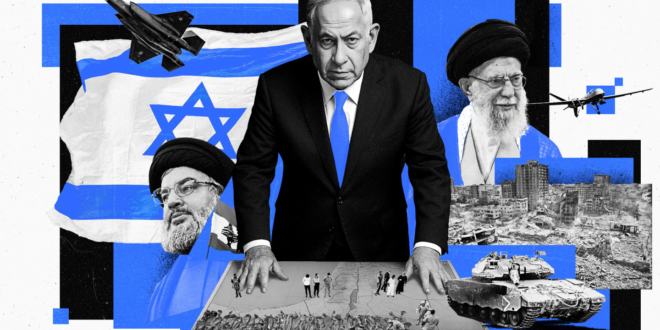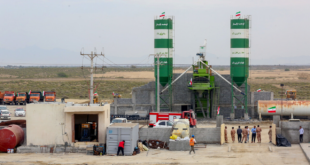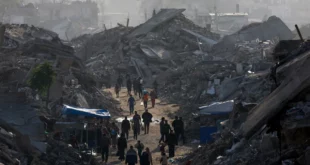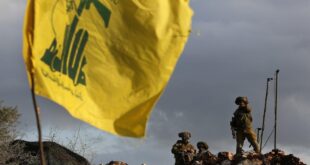For decades, preparations simmered. Covert and overt operations, escalating rhetoric, and mutual threats have long defined the standoff between the so-called Iranian axis and Israel.
Capitalising on the 7 October attacks by Hamas-led militants, Tel Aviv chose to cut to the chase, launching successive strikes against Iran’s allies and finally Iran itself, aiming to eliminate regional adversaries in a protracted war fundamentally unlike any before.
The result is a larger Israeli presence than ever before in Syria, Lebanon, and the occupied Palestinian territories. Many have even drawn parallels with the outcome of the 1967 six-day war, or Naksa (setback), when Israeli forces occupied Egypt’s Sinai, East Jerusalem, the West Bank, and Syria’s Golan Heights.
“What is happening today far exceeds what occurred during the setback (Naksa) of 1967 and its outcome,” said Amin Qammourieh, a veteran political writer and researcher based in Lebanon.
“In just six days in 1967, Israel established strategic equations and imposed new realities that persisted until today,” he explained. “But the current situation (after Israel’s three wars on Gaza, Lebanon and Iran) is totally different and the consequences are far more grave.”
For one, Gaza now lies in ruins. In Lebanon, Israel has reoccupied key positions south of the Litani River after delivering punishing blows to Hezbollah, eliminating its top three tiers of leadership and assassinating its historic leader Hassan Nasrallah, with a negligible response from Israel’s enemies.
The Lebanon war ended with an agreement forcing Hezbollah’s retreat north of the Litani. Weeks later, the Assad regime, Hezbollah’s vital lifeline, collapsed in Syria.
“Israeli interventions in Gaza, Lebanon and Iran come in the context of an ambitious Israeli vision that includes neutralising Iran’s nuclear ambitions and possibly even regime change in Iran,” Mona Yacoubian, Senior Advisor and Director of the Middle East Program, Center for Strategic and International Studies (CSIS), told The New Arab.
Generational warfare and shifting balances
Artillery and ammunition are one thing that has drastically changed, for some.
While Israel’s enemies still fight with second-generation tools and tactics, Israel wages war with seventh-generation technology, granting it overwhelming technological and military superiority to impose its will, according to veteran researcher Amin Qammouriyeh.
“Israel fights with cutting-edge military tech against adversaries wielding conventional weapons and less sophisticated military structures,” he told The New Arab.
Worse, he argues, is the absence of any international counterbalance equivalent to the support Israel receives, pointing to another varying factor: global powers.
“Russia is now mired in Ukraine, and China shows little direct interest in the Middle East, decisively tilting the balance of power in Israel’s favour,” Qammourieh added.
In 1967, the region had key players that have since faded. Israel’s war on Iran may mark the birth of a new era, marked by the decline of another major regional power that, since 1979, has built a vast military arsenal and planted proxies across Iraq, Syria, Lebanon, Yemen, and Gaza to protect itself and its nuclear program, said warfare expert and retired Brigadier General Saeed Qazzah.
Iran’s program, evolving through reactor construction, uranium enrichment, and ballistic missile development, posed a direct threat to neighbours, including Israel and Europe.
Iran, reliant on these proxies to defend its interests, never imagined losing them one after another in under two years, according to Qazzah. It’s “a systematic liquidation leaving these forces unable even to defend themselves, let alone support Tehran in its open war with Israel,” he noted.
Qazzah added that, unlike the 1967 war in which state armies clashed, the current conflict is “a complex geopolitical struggle, fundamentally an indirect confrontation via proxies whose effectiveness has visibly waned amid deepening ideological and strategic rifts and increased international focus on Iran’s nuclear threat”.
Strategic errors
According to International Relations scholar Raif Khoury, the shift from a proxy-led conflict to a direct state-to-state confrontation was the result of the 7 October attacks, which he said “constituted a strategic earthquake”, effectively dismantling the so-called “Axis of Resistance” that Iran painstakingly built to confront Israel.
Yet, at the moment of truth, Tehran abandoned its allies during the war, a move Khoury describes as a “grave strategic error”.
He explained that Iran failed to capitalise on the moment when Hamas and Hezbollah enjoyed widespread sympathy.
“It could have leveraged this for coordinated strikes instead of allowing Israel to pick off each ally individually, leading to their sequential downfall and exposing Iran to direct confrontation with Israel,” Khoury said.
This enabled Israel to achieve a long-sought strategic goal of Prime Minister Netanyahu: striking Iran’s nuclear program.
Tehran committed another strategic error, he argues, by ignoring US proposals before the war erupted, opening the door to a military scenario that redraws the region’s map of influence.
“This phase could lead to reduced Iranian influence beyond its borders, curtailing its ability to impact neighbours as before,” he concluded.
New era
As a result, these conflicts have paved the way for Israel to shape a new Middle East, as it did after the 1967 and 1973 wars by imposing new facts on the ground and forcing Arab states into peace processes – from Camp David to Wadi Araba – according to the regional experts.
“How the region evolves as a result of this latest conflict is still very much in question: it could lead to a dramatic diplomatic effort that resets the role of diplomacy and an establishment of a rules-based order, or it could result in Israel’s undisputed military hegemony over the region,” Yacoubian said.
Khoury also believes the war with Iran will ultimately end at the negotiating table, with the fragile ceasefire announced by Donald Trump so far hanging in the balance.
“Israel, after these wars, will impose a new deterrence equation while its enemies’ capacity to respond erodes, regardless of their missile arsenals, noting that geography itself no longer permits adjusting the balance of power,” he said.
He predicted a new wave of normalisation with Israel, suggesting Syria, under a new regime, might be among the first seeking a peace deal.
Political expert Qammourieh, meanwhile, warned that Israel’s next steps could involve targeting entities not yet in direct confrontation but deemed potential future threats.
Normalisation, he cautions, assumes “normal” relations, while the current reality features a gross imbalance favouring Israel, enabling it to dictate terms.
 Eurasia Press & News
Eurasia Press & News




